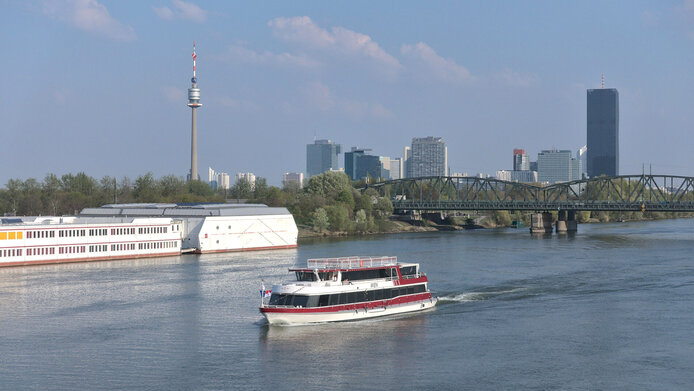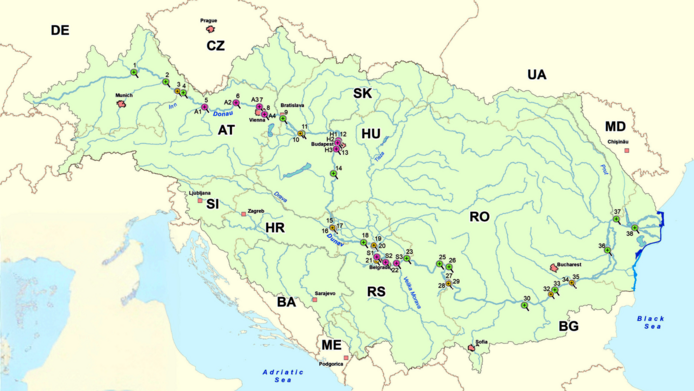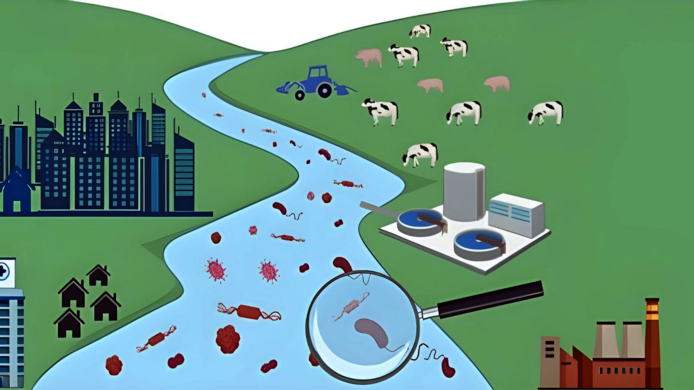Are antibiotic resistant bacteria in the Danube a problem?

One can hardly overestimate the importance of antibiotics. These drugs that reliably kill bacterial pathogens in the body are one of the foundations of modern societies. However, the human race uses the drugs excessively in both humans and animals – agriculture being one of the largest consumers of antibiotics. As a result, resistance develops. The microorganisms adapt and the drugs become ineffective. Researchers estimate that every year 30,000 deaths in the EU and 1.5 million worldwide are caused by antibiotic resistance.
Both antibiotics and resistant bacteria end up in the natural environment via wastewater. Researchers fear that the pathogens could accumulate in bodies of water and infect humans or animals when the water is used for drinking water extraction, irrigation or simply swimming. With his team, microbiologist Alexander Kirschner from the Medical University of Vienna has investigated how acute this danger actually is. For the project “Fecal pollution routes of antibiotic resistance in rivers”, which receives funding from the Austrian Science Fund FWF, Kirschner has joined forces with Andreas Farnleitner from TU Wien and KL Krems and Gernot Zarfel from the Medical University of Graz. They have systematically examined the entire course of the River Danube, including its largest tributaries, looking for the presence of resistant bacteria and resistance genes. The point of the study was to more accurately determine the extent and causes of this type of pollution.
With the increasing evidence of resistance to be found in the environment and the dwindling stock of effective reserve antibiotics, the race against extremely adaptable bacterial pathogens has entered a decisive phase worldwide.
More about the project
Positive effects of EU measures
“The study is based on the Joint Danube Survey, which has been collecting chemical and biological data on water quality every six years since 2001,” explains Kirschner. This time series inter alia reveals the positive consequences of European integration: “In Romania, Bulgaria, Slovakia and, especially, Hungary, the situation regarding fecal pollution of the Danube has improved significantly in recent years thanks to the improvement of wastewater treatment plants and wastewater infrastructure. Serbia, on the other hand, which still has no strict water protection regulations, has a problem,” explains the scientist.
In the context of the 2019 study, the entire navigable course of the Danube, with a total length of 2,300 kilometers, was for the first time also examined for antibiotic resistant bacteria and antibiotic resistance genes. The gene fragments responsible for resistance hold interest for research because they are also passed on between bacteria by means of “horizontal gene transfer”.
Thousands of tests
Kirschner and his colleagues have developed a concept that uses bacterial cultures and the so-called PCR method to determine quantitatively the presence of resistant bacteria of the species Escherichia coli, the genera Klebsiella and Pseudomonas as well as resistance genes in the Danube. They sampled 36 locations along the Danube on either bank and in the middle. The team then cultivated around 50 E. coli strains from each sample and tested the effectiveness of several antibiotics on them in order to identify single, double or multiple resistances. With the help of the PCR method, which became more widely known during the Covid pandemic, the presence of gene segments in the sample can be quantitatively determined and thus add useful data. “In total, thousands of cultures were created and tens of thousands of standardized tests were carried out – a huge effort,” notes Kirschner.
The results show that resistance gene loads go hand in hand with fecal contamination. “During normal and low water levels, the presence of human faeces correlated in a highly significant way with the load of resistance genes. During floods, for example when the river inundates fields fertilized with manure, animal sources then also become relevant,” explains Kirschner. “In countries with a well-developed sewage infrastructure, the problem of bacteria in nature developing resistance because they come into contact with antibiotics tends to play a minor role.” Generally, the contamination depends heavily on the hospitals in the catchment area, the use of antibiotics in the population and in agriculture, the size of the upstream wastewater treatment plants and the dilution factor that is determined by the quantity of water involved.
The researchers paid particular attention to so-called biofilms, i.e. the slimy layers of algae, fungi and microorganisms that build up on rocks or tree branches under water. “The hypothesis was that resistant bacteria could accumulate on these durable structures,” says Kirschner. “The result was that the load in this context can be extremely heterogeneous: In some biofilms you find less resistance than in the water itself, while on others it is more prevalent.”
Outlier in Budapest
Overall, the pollution of the Danube within Austria was found to be rather moderate – as is the norm in all countries with high hygiene standards. With respect to fecal contamination and the general level of pollution in the river, worrisome data were found only downstream of Austria in regions where EU directives are not in place or have not yet taken effect. A surprising data outlier was found however in Budapest: for reasons unknown, one sample showing contamination so high that it exceeded even the values from the non-EU country Serbia, as Kirschner reports.
Yet the comparatively good situation in Austria does not mean that the country can afford to ignore the issue: “Resistant pathogens can indeed also be found in the Danube in Austria. The question is how the values there relate to long-term trends,” says Kirschner, who is championing regular microbiological monitoring in order to keep the risk assessment up to date. With the increasing evidence of resistance to be found in the environment and the dwindling stock of effective reserve antibiotics, the race against extremely adaptable bacterial pathogens has entered a decisive phase worldwide.
Personal details
Alexander Kirschner heads the Water Microbiology research group at the Institute of Hygiene and Applied Immunology at the Medical University of Vienna. He also works at the Department of Water Quality and Health at the Karl Landsteiner University of Health Sciences in Krems and at the Inter-University Cooperation Center for Water and Health (ICC, www.waterandhealth.at). The project “Fecal pollution routes of antibiotic resistance in rivers” (2019–2024) received EUR 406,000 in funding from the Austrian Science Fund FWF.
Publications
Schachner-Groehs I., Koller M., Leopold M. et al.: Linking antibiotic resistance gene patterns with advanced faecal pollution assessment and environmental key parameters along 2300 km of the Danube River, in: Water Research 252, 2024
Kirschner A.K.T, Schachner-Groehs I., Kavka G. et al.: Long-term impact of basin-wide wastewater management on faecal pollution levels along the entire Danube River, in: Environmental Science and Pollution Research 31, 2024
Skof A., Koller M., Baumert R. et al.: Comparison of the Antibiotic Resistance of Escherichia coli Populations from Water and Biofilm in River Environments, in: Pathogens 13, 2024







